Introduction
xData Platform: Cross-Data
Integration and Analysis
Big Data Integration Research Center (BDI) drives the xData Platform that integrates and actualize sensing data collection and analysis across a variety of data sources, supporting the development and demonstration of smart services with the resulting output.Cross-data integration, analysis, and prediction are enabled thorough the use of API.
- Research: Big Data Integration Research Center
xData Platform Overview
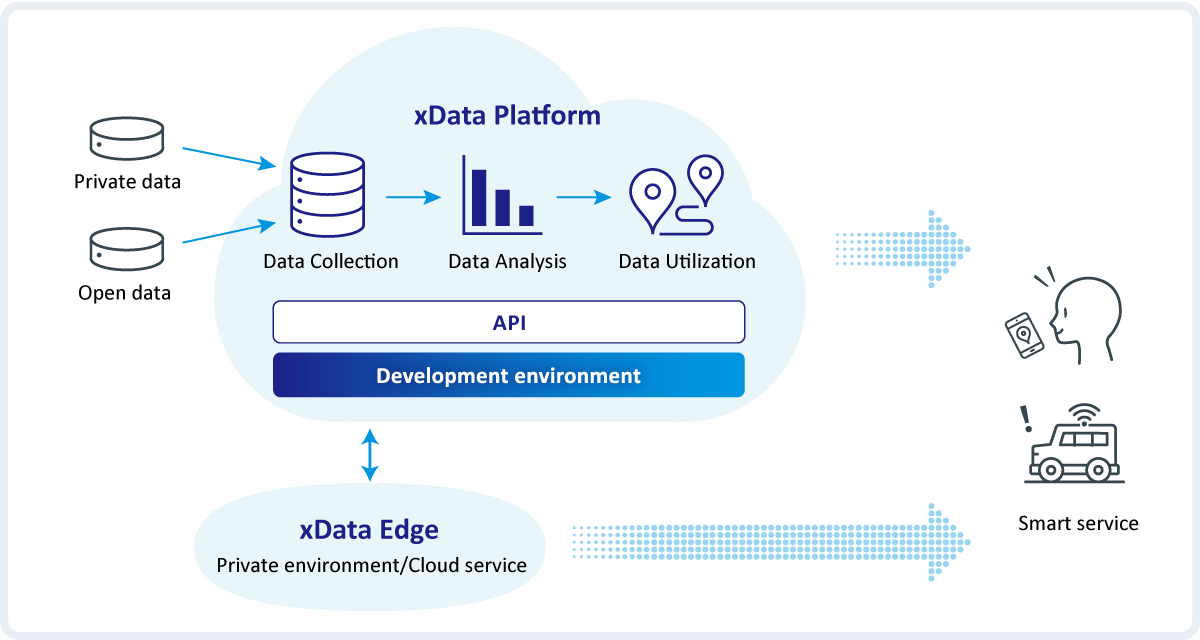

Data Collection
Event Data Warehouse (EvWH) is an open data management system to convert a variety of sensing data including environment, traffic, and health data into an appropriate format for data integration and analysis, and also data storage purposes. In EvWH, remote sensing data and open data are archived by NICT. Users also can independently collect and add data.
Data Analysis
A variety of intelligent APIs are employed for data integration and analysis purposes, enabling discovery and predictive correlation patterns to emerge from the collected event data. BDI also provides information assets for each application such as the prediction of atmosphere contamination and of traffic disturbance risks, as well as packaging process programs, data sets, prediction models, etc. which use task-specific API. Importing information assets contained within the Information Asset Repository to a development environment enables the customization of process programs and prediction models. The result can be combined with user-owned data to verify technology and proof-of-concept.
Information Assets Catalog describes the overview of information assets, the technical features of analytics, use cases, and so on. Information Assets Repository stores process programs, prediction models, sample data, and documents such as Work Procedure (collectively, they are called as Information Assets). An issue management function provides discussion opportunities to enhance systems and bug tracking. Researchers can access their Information Assets Repository after registration.
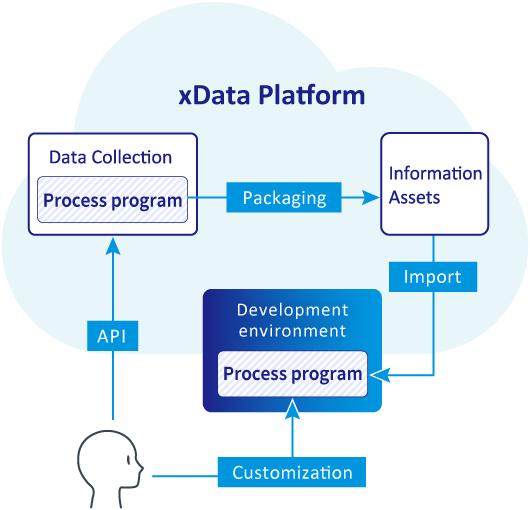
Data Utilization
Researchers can obtain collection, analysis, and prediction results via API and utilize said output for smart service development. Example: a decision support smart service that supports actions through risk alert notifications and risk-free route navigation, etc. via a risk prediction map based on data incorporating meteorological conditions, traffic congestions, and accident information.
Development Environment
We provide two development environments: xData Platform and xData Edge. This encompasses a user development environment, Docker container packaging API and development tools. It is recommended to use xData Edge when a researcher uses private data or customizes information assets. Data anonymized on xData Edge can be processed on xData Platform.
Researchers can incorporate development results on xData Platform into their service or application after accepting the Technology Transfer Agreement. For more information, please contact us.
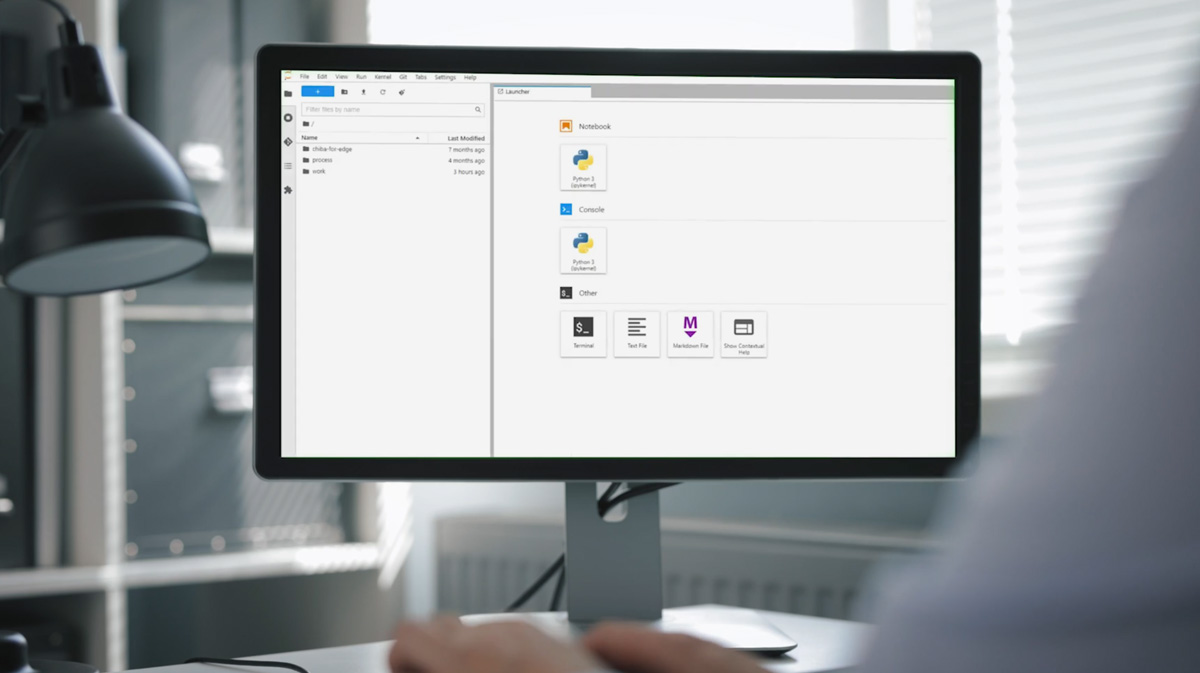
A Smart Service example case study
A smart service to support optimal route determination can be implemented to ensure safe and efficient route navigation services that simultaneously integrate traffic congestion prediction information based on rain/snow patterns.
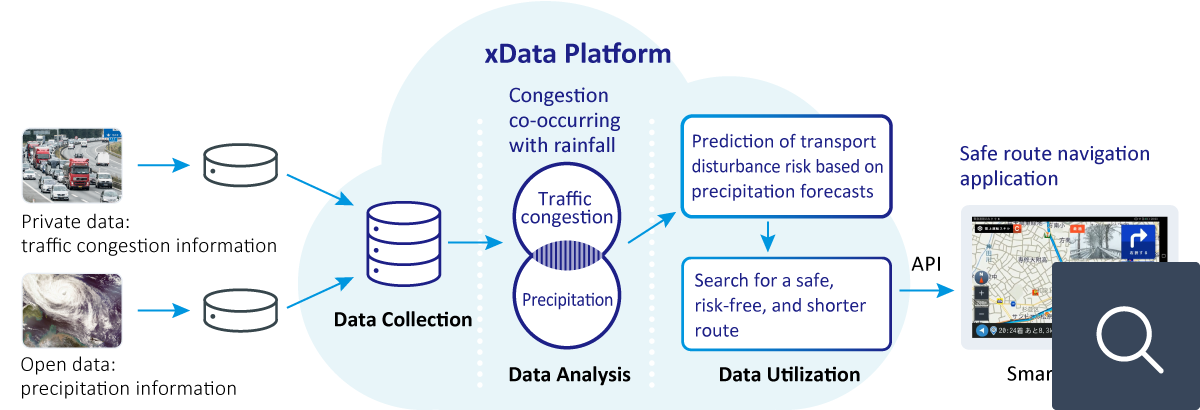
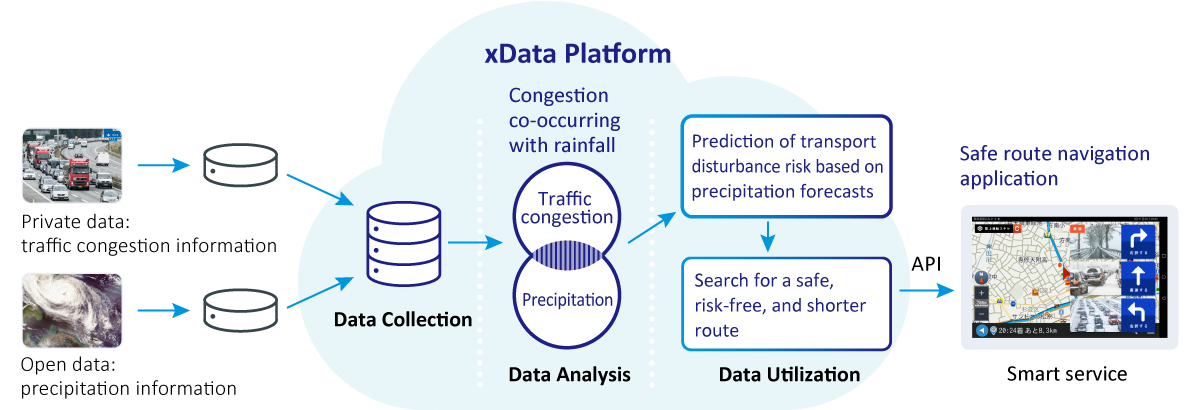
Use xData Platform
To use xData Platform, researchers must first sign the Joint Research and Development Agreement. After signing the agreement, an Information Assets Repository account and API key will be issued. For more information, please contact us by clicking the “Contact” button.
APIs are also available on Data Centric Cloud Service(DCCS) provided by NICT Testbed.

